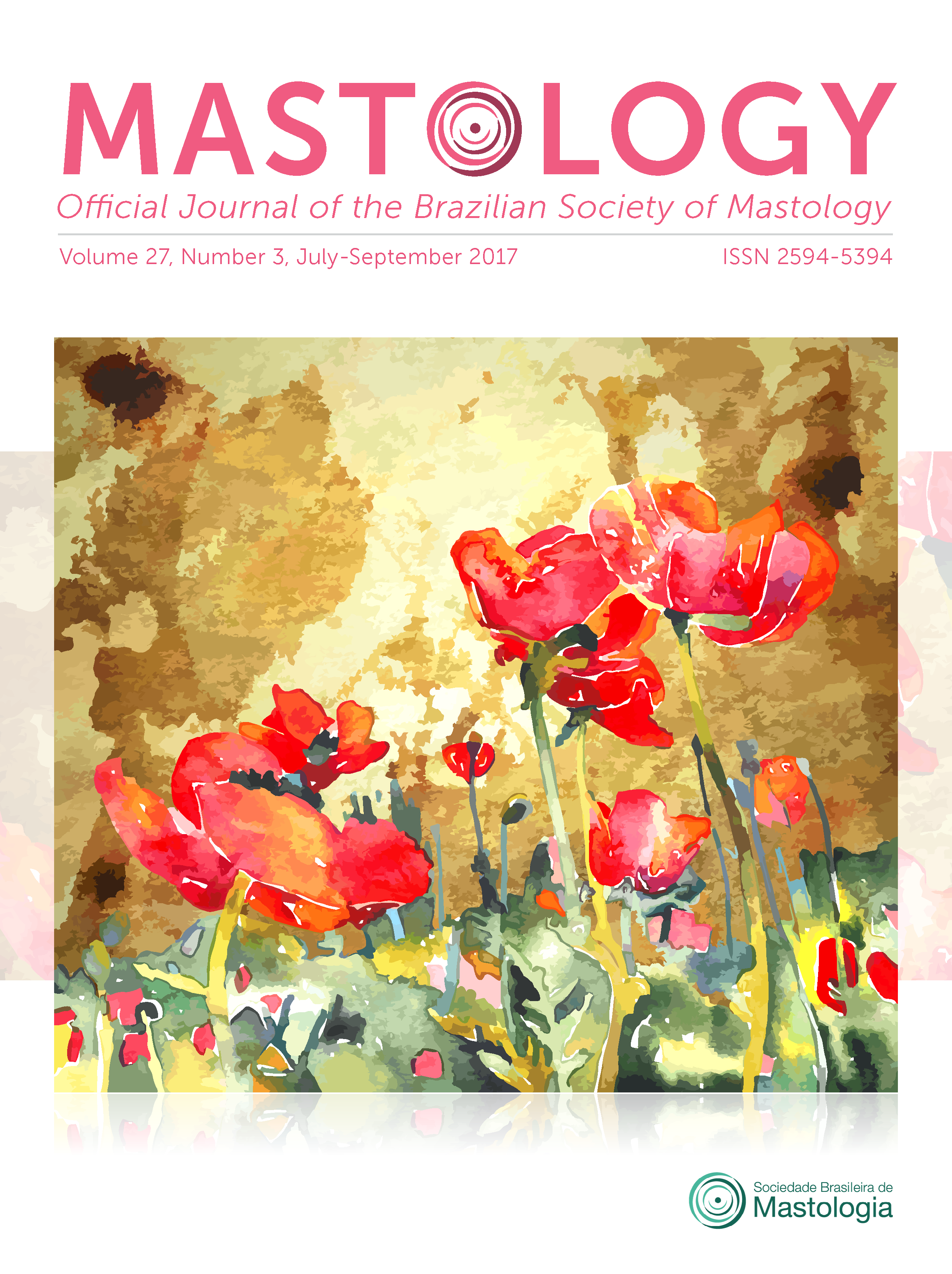THE VALIDITY OF AN ADJUSTABLE COMPRESSION VELCRO WRAP FOR THE TREATMENT OF PATIENTS WITH UPPER LIMB LYMPHEDEMA SECONDARY TO BREAST CANCER
A PILOT STUDY
Keywords:
Physiotherapy, lymphedema, breast cancerAbstract
Objective: To analyze the efficacy of an adjustable compression Velcro wraps used to reduce limb volume as a form of treatment for upper limb lymphedema secondary to breast cancer. Methods: Women with lymphedema who had already undergone conventional treatment with compression bandaging were included. These patients were recruited through an evaluation in which the manual perimetry was applied using the truncated cone formula, and in which lymphedema were considered as a difference greater than 10% and/or 200 mL between the limbs. Patients wore their compression devices daily, taking them off only for a shower. In a period of one month of use, manual lymphatic drainage was not applied. Performing exercises was allowed 3 times a day. Patients returned after one month to have their limb volume reassessed and also to respond to a questionnaire. Results: A total of 9 patients were evaluated, and the median volume difference between the affected limb and the control during the first evaluation was 564.4 (SD=443.2) mL. At the reevaluation, the median difference was 390.6 (SD=306.8) mL. There was a significant difference when comparing the volumes at the evaluation and reevaluation (p=0.008). The degree of satisfaction was 9 (SD=1.3). Conclusion: The adjustable compression Velcro wrap was effective in the reduction of limb volume in with lymphedema. In addition, the patients reported that the device was more practical and more comfortable compared to the compression bandage. Patients who live in other cities or who are not available to perform daily treatment can benefit from the use of the device.
Downloads
References
Cormier JN, Rourke L, Crosby M, Chang D, Armer J. The surgical treatment of lymphedema: a systematic review of the contemporary literature (2004-2010). Ann Surg Oncol. 2012;19(2):642-51.
Bevilacqua JLB, Bergmann A, Andrade MF. Linfedema após o câncer de mama – da epidemiologia ao tratamento. Rev Bras Mastologia. 2008;18(4):171-8.
Lanza M, Bergmann A, Ferreira MGCL, de Aguiar SS, Dias RA, Abrahão KS, et al. Quality of Life and Volume Reduction in Women with Secondary Lymphoedema Related to Breast Cancer. Int J Breast Cancer. 2015. doi: 10.1155/2015/586827.
Vries M, Vonkeman WG, Ginkel RJ, Hoeskstra HJ. Morbidity after axillary sentinel lymph node biopsy in patients with cutaneous melanoma. Eur J Surg Oncol. 2005;31:778-83.
Ehmann S, Whitaker JC, Hampton S, Collarte A. Multinational, pilot audit of a Velcro adjustable compression wrap system for venous and lymphatic conditions. J Wound Care. 2016;25(9):513-20.
Bevilacqua JL, Kattan MW, Changhong Y, Koifman S, Mattos IE, Koifman RJ, et al. Nomograms for Predicting the Risk of Arm Lymphedema after Axillary Dissection in Breast Cancer. Ann Surg Oncol. 2012;19:2580-9.
Oremus M, Dayes I, Walker K, Raina P. Systematic review: conservative treatments for secondary lymphedema. BMC cancer. 2012;12:6. doi: 10.1186/1471-2407-12-6.
Vignes S, Porcher R, Arrault M, Dupuy A. Factors influencing breast cancer-related lymphedema volume after intensive decongestive physiotherapy. Support Care Cancer. 2011;19:935-40.
Campanholi LL, Duprat Neto JP, Fregnani JHTG. Analysis of physical therapy in patients who had radical
lymphadenectomy for cutaneous melanoma. Applied Cancer Research. 2012;32(1):12-5.
Damstra RJ, Partsch H. Prospective, randomized, controlled trial comparing the effectiveness of adjustable compression Velcro wraps versus inelastic multicomponent compression bandages in the initial treatment of leg lymphedema. J Vasc Surg Venous Lymphat Disord. 2013;1(1):13-9.
Mosti G, Cavezzi A, Partsch H, Urso S, Campana F. Adjustable Velcro Compression Devices are More Effective than Inelastic Bandages in Reducing Venous Edema in the Initial Treatment Phase: A Randomized Controlled Trial. Eur J Vasc Endovasc Surg. 2015;50(3):368-74.
Williams A. A review of the evidence for adjustable compression wrap devices. J Wound Care. 2016;25(5):242-7.
Campanholi LL, Duprat Neto JP, Fregnani JHTG. Mathematical model to predict risk for lymphoedema after treatment of cutaneous melanoma. Int J Surg. 2011;9:306-9.
Dunberger G, Lindquist H, Waldenstrõm AC, Nyberg T, Steineck G, Avall-Lundqv. Lower limb lymphedema in gynecological cancer survivors--effect on daily life functioning. Support Care Cancer. 2013;21(11):3063-70.
Finnane A, Lui Y, Battistura D, Jansa M, Hayes SC. Lymphedema after breast or gynecological cancer: use and effectiveness of mainstream and complementary therapies. J Altern Complement Med. 2011;17(9):867-9.
Kim SJ, Park YD. Effects of complex decongestive physiotherapy on the oedema and the quality of life of lower unilateral lymphoedema following treatment for gynecological cancer. Eur J Cancer Care. 2008;17(5):463-8.
Campanholi LL, Duprat Neto JP, Fregnani JHTG. Evaluation of inter-rater reliability of subjective and objective criteria for diagnosis of lymphedema in upper and lower limbs. J Vasc Bras. 2015;14(1):16-21.
Djavanmard MP, Michl I, Korpan M, Fazeny B, Budinsky AC, Wiesinger E, et al. Impaired hemorheology in patients with postmastectomy lymphedema. Breast Cancer Res Treat. 1996;38:283-8.
Wiig H, Keskin D, Kalluri R. Interaction between the extracellular matrix and lymphatics: consequences for lymphangiogenesis and lymphatic function. Matrix Biol. 2010;29(8):645-56.
Downloads
Published
How to Cite
Issue
Section
License
Copyright (c) 2017 Larissa Louise Campanholi, Graziele Chiquette Lopes, Fábio Postiglione Mansani, Anke Bergmann, Jaqueline Munaretto Timm Baiocchi

This work is licensed under a Creative Commons Attribution 4.0 International License.







